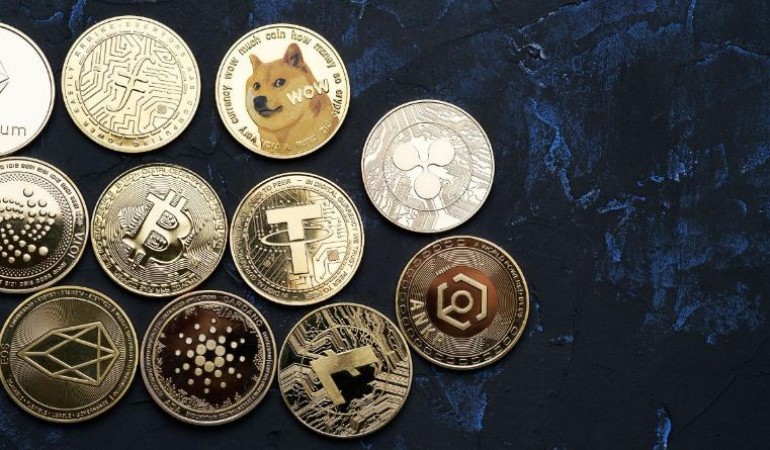
In human history, the mediums of exchange have experienced a series of radical shifts, moving from tangible goods to intangible digital assets. As we journey through this evolution, it's crucial to understand where we've come from to truly appreciate the revolutionary essence of Bitcoin in today's financial landscape.
The Dawn of Commerce: Barter Systems and Precious Metals
Centuries ago, trade was primarily conducted through direct exchanges of goods and services, known as the barter system. Imagine trading a cow for sacks of grain or a piece of handmade pottery for fresh produce. While simple and direct, the barter system had its complications. The value assessment was subjective, and certain goods were perishable, making long-term storage an issue.
To alleviate these challenges, ancient civilizations transitioned to using universally recognized items with intrinsic value, like gold, silver, or copper, for trade. These metals weren’t just precious; they could be melted, standardized, and minted into coins, offering a consistent value and portability.
The Age of Papyrus: Introduction of Paper Currency
The ancient Chinese civilization was among the first to comprehend the limitations of metal coins, especially for large transactions. By the Tang and Song dynasties, merchants began using paper representations of these metal coins. This was the dawn of paper money. By being lightweight and easy to carry, paper money transformed trade and commerce.
However, this invention wasn’t without its drawbacks. Counterfeiting became a significant concern, pushing states and empires to establish strict measures and official mints to regulate paper currency production.
Banking and the Renaissance: Modernizing Money
The Renaissance era in Europe wasn't just a period of art and literature; it was also an era of financial innovation. As trade routes expanded and commerce boomed, there was a palpable need for better money management systems. The Medici family in Florence, among other banking pioneers, played a critical role in modernizing banking, introducing ledgers and promissory notes.
As these banking practices spread across Europe, they paved the way for more formalized financial institutions and eventually the establishment of central banks. These banks were entrusted with printing standardized national currencies, ensuring uniformity, trust, and ease of exchange.
Pixels Over Paper: The Digital Transformation of Money
As we approached the end of the 20th century and transitioned into the 21st, technology began reshaping our relationship with money. Banks started offering digital banking services, enabling users to conduct transactions without visiting brick-and-mortar establishments. New forms of online payment systems, like PayPal, emerged, simplifying digital trade on a global scale.
However, with the rise of the digital realm, new challenges surfaced. Digital security became paramount, with cybercrimes, such as online fraud, making headlines. As the world grew more connected, the need for a safer, universally accepted digital currency became evident.
Bitcoin and the Birth of Cryptocurrency
Enter Bitcoin, introduced in 2008 by the enigmatic entity known as Satoshi Nakamoto. More than just a digital currency, Bitcoin brought with it a groundbreaking technology - the blockchain. This decentralized ledger system offered a way to record transactions transparently, without the need for a central authority, thus challenging the traditional financial model.
Bitcoin's decentralized nature meant that no single institution controlled it. Its scarcity (with a cap of 21 million coins) was designed to prevent inflationary pressures. Since its introduction, Bitcoin has experienced volatility, regulatory challenges, and widespread scrutiny but has also opened the doors to numerous other cryptocurrencies, further solidifying the digital transformation of money.
Cryptocurrency vs. Traditional Currency: Advantages and Controversies
Comparing traditional currency and cryptocurrency is akin to comparing apples to oranges. Cryptocurrencies, led by Bitcoin, offer decentralization, potentially enhanced security due to cryptographic techniques, and a global reach without exchange rate complications. These advantages, however, are accompanied by criticisms. Environmental concerns arise from the energy-intensive mining processes of some cryptocurrencies. Furthermore, the decentralized nature of these coins has raised regulatory eyebrows due to their potential misuse in illicit activities.
Conclusion: The Future of Currency in a Digital World
From tangible barter goods to digital codes on a decentralized ledger, the journey of money is a testament to human innovation. As technology continues to evolve and reshape our world, it's only logical to assume that our mediums of exchange will mirror this evolution. With the rise of solutions like https://immediate-definity-ai.io/ aiding in the seamless transition to digital currency, many are finding it easier to embrace this change. Whether Bitcoin or another successor will become the global standard remains to be seen, but one thing is clear: the digitization of currency is not just a passing phase but a leap into the future of finance.